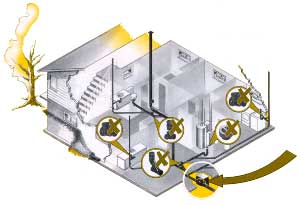As the East Coast grapples with the dire aftermath of Hurricane Sandy, a new study by Munich Re reveals that weather-related extreme events have most affected North America in recent decades. Research by the German reinsurer of 30,000 records of natural catastrophes showed such disasters have risen five-fold in North America over the last 30 years. For me, the Munich Re report, “Severe weather in North America," simply becomes the most recent reminder that climate adaptation must be a corporate priority. The report notes that the five-fold increase in weather-related losses in North America the past three decades compares with an increase factor of 4 in Asia, 2.5 in Africa, 2 in Europe and 1.5 in South America. It also explains:
Anthropogenic climate change is believed to contribute to this trend, though it influences various perils in different ways. Climate change particularly affects formation of heat-waves, droughts, intense precipitation events and, in the long run, most probably also tropical cyclone intensity.
Past exchanges on this blog have been about extreme heat and precipitation, but perhaps the most germane for the moment is our discussion about Corporate Learning from Past Disaster.
It’s too soon to tell if Sandy has had a disproportionate impact on the private sector, but it’s likely that flood damage will net out a major cost to New York City’s businesses, even as Mayor Bloomberg and city officials consider infrastructure improvements to shore up against future storms.
Businesses newly committed to climate adaptation will find resources from peers with their own plans. They also may find good tools from government-backed organizations that discuss what climate adaptation looks like and, importantly, how to create an institutional commitment to climate adaptation.
Two that I especially like are:
“Private Sector Engagement in Adaptation to Climate Change,” a new report from the Organization for Economic Co-operation and Development
Making Cities Resilient: My City is Getting Ready a guide for the United Nations International Strategy for Disaster Reduction, which I tweaked for a corporate audience here.
It’s likely the storm will prod corporate risk managers and business-continuity planning managers to take stock and begin instituting telecommuting policies, diversifying their supplier chain to other geographies and advising the small businesses upon which they rely about how to develop a resiliency or adaptation plan.
As Hurricane Sandy galvanizes us to examine more closely our climate adaptations, I’m inspired that you, readers, are taking leadership.








